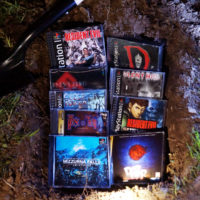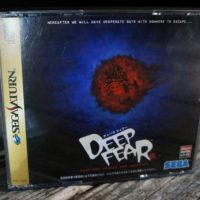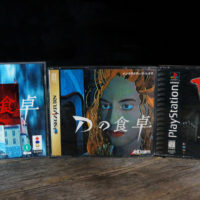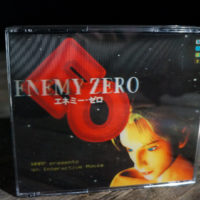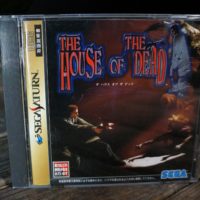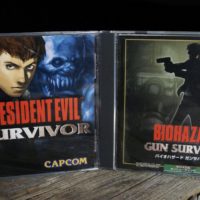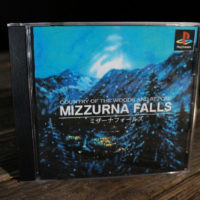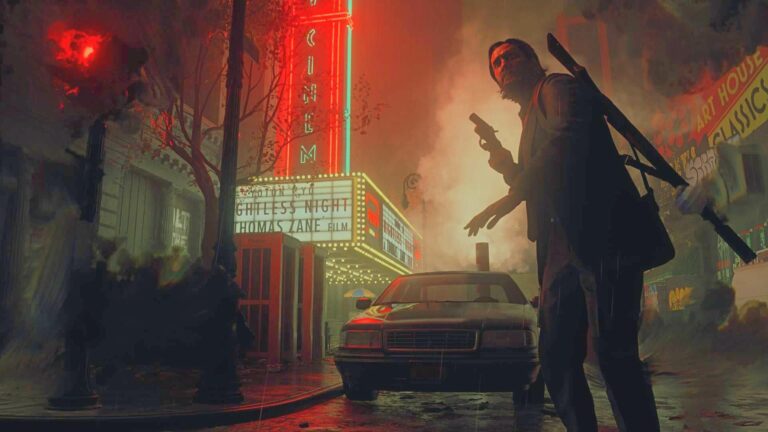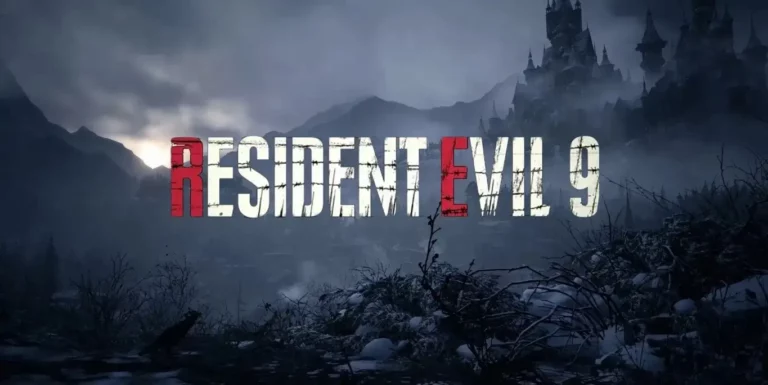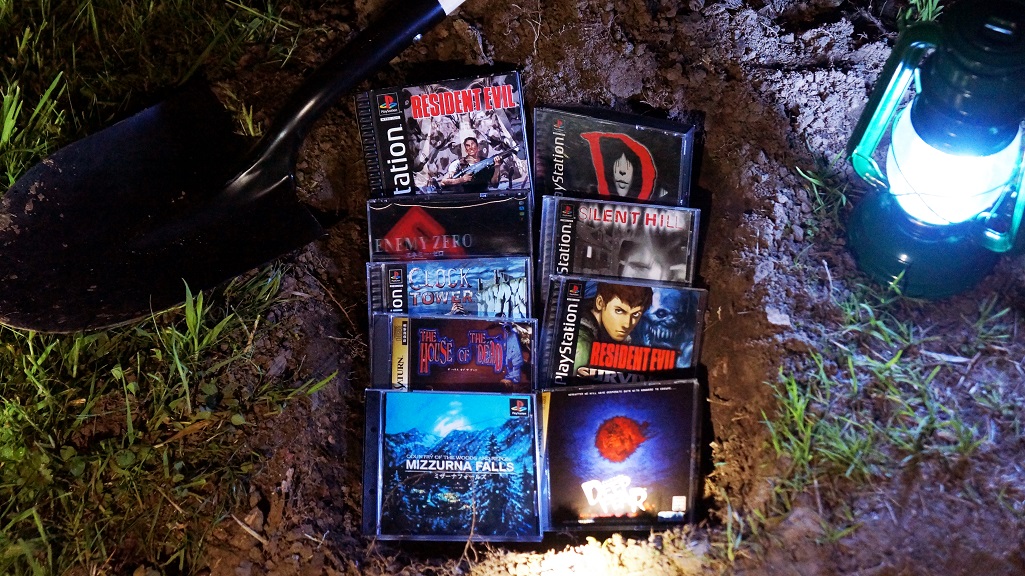
Generations of Horror is a series of articles that takes a journey through the history of console horror gaming by focusing on a certain era or generation of game consoles, and discussing some of the most unique, important, or pioneering titles from those periods. If you missed the first article in the series, you can catch up with the humble beginnings of console horror right here.
The mid 1990s saw the beginning of a period where the console space was gaining more and more traction as technology improved and games took a few steps closer toward realistic visuals and sound with the early 3D era. The jump from 2D to 3D as a focus in game development allowed much more potential for immersion in many different ways while giving developers more ability to make games feel closer to the cinematic and enthralling style of horror movies.
Here we’ll cover games that stood out from the era ranging from around 1995 to 2000 and examine what they meant for the genre going forward.
*All photos by the author from personal collection, a full-size gallery can be viewed at the end
_____________________________________________________________
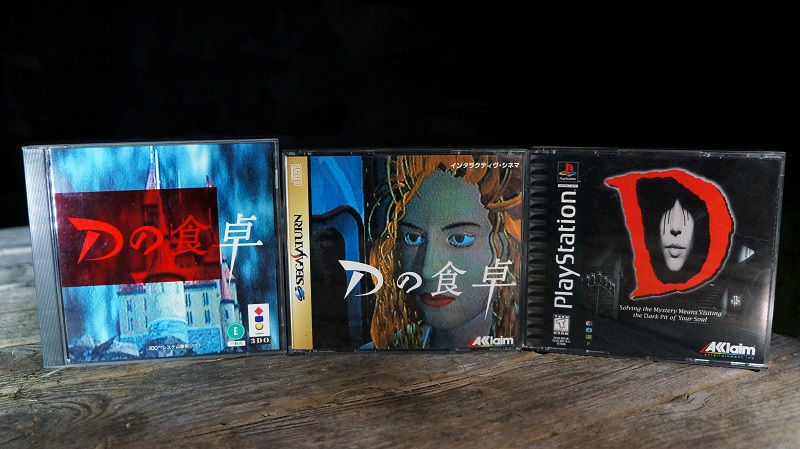
D
3DO, released April 1995
Following in the footsteps of games like 1993’s Mansion of Hidden Souls or The 7th Guest, the very eccentric Kenji Eno’s D is a game with a hell of a story behind it. Several things stand out from its imitators or predecessors in the CG-rendered FMV horror game genre. More than any of the CG-rendered FMV games that preceded it, D features much darker themes and content, more violence, and an unstoppable two-hour timer that runs through the whole game, giving an extra level of tension- and, at times, frustration.
During the certification process for the game, Eno was forced to remove most of the questionable and violent content from D, but then pulled a fast one on the publisher by switching the censored discs that were being sent to the pressing plant with the uncensored discs at the last minute. The rest is history.
D was Eno’s first major game release, and he stated that if the game was a failure, he would quit game development forever. Thankfully, the game was a huge success in Japan with its original 3DO release, which inspired ports to several other platforms, as well as a director’s cut release. Unfortunately, some of the circumstances of the future re-releases did not go very well, most specifically the Sony PlayStation version.
When Sony grossly under-produced the PS1 version of D by tens of thousands of copies and was unable to meet the demand of even copies that had already been pre-ordered, Eno did not take this lightly. Later that year, when he went on stage to announce his next game (Enemy Zero) at a Sony press event, he pulled another fast one and made the PlayStation logo warp into a Sega Saturn logo in real-time at the end of the game trailer, as he announced the game would be released exclusively on the Saturn before walking off stage.
He went on to produce two sequels to D (both of which will be covered in this series,) and continued working in the games industry until his death in 2013, but he remains a legend to many gamers today through his thought-provoking and important games he released while alive, as well as his outspoken and eccentric behavior in the press.
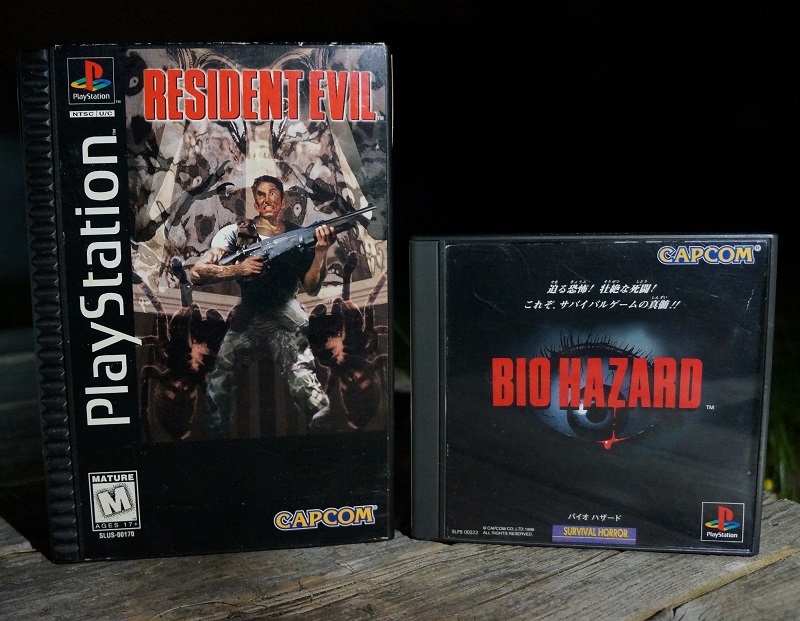
Resident Evil
Sony PlayStation, released March 1996
1996 saw the release of what most consider to be the grandfather of all modern survival horror: the first Resident Evil game. Resident Evil really showed what was possible in terms of immersion and cinematic quality in early 3D games like none of its peers could even come close to at the time. It also features deep and challenging gameplay, a complex item management system, clever puzzles, several different endings and paths, and loads of atmosphere that many thought was impossible at the time. When I first played the game in 1996, I couldn’t even believe what I was witnessing and it started me down a long path to get where I am today, with an undying love for horror gaming some 20 years later.
Not much else can be said here that most fans of horror gaming don’t already know. The game has stood the test of time as the series has continued going on for almost 25 years now, with dozens of games under its umbrella (no pun intended.) The first game in the series is still my all-time favorite in the genre and the series, and I doubt anything will ever change that, but to say it inspired a revolution in horror gaming is a bit of an understatement. It kickstarted the genre in a way that nothing else ever has.
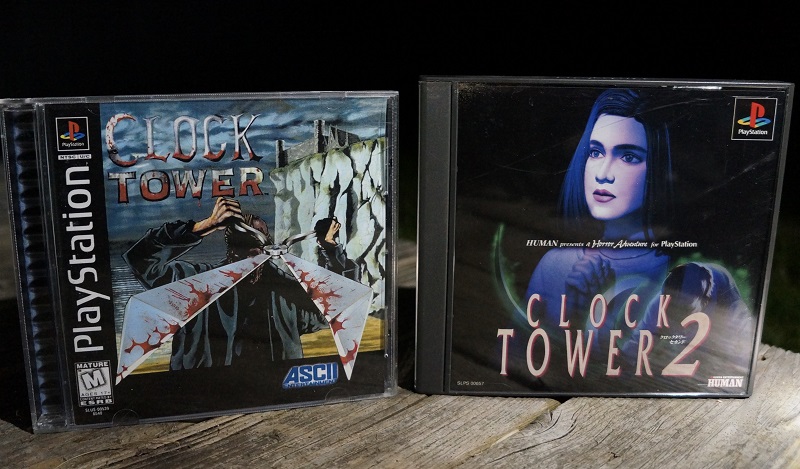
Clock Tower
Sony PlayStation, released December 1996
Clock Tower for PlayStation (Clock Tower 2 in Japan) is a direct sequel to the Super Famicom Clock Tower game, which was already ahead of its time when it released in late 1995. In just barely over one year from the release of the first game, Human had already completed this second entry in the series, which seems unreasonably fast for how much more advanced the game is in some ways.
This Clock Tower is rendered fully in 3D, unlike its 2D predecessor, and it allows for some very clever use of 3D camera angles for some of the most memorable scares you can find on the PlayStation console. The story was much bigger and longer than the first game, and it features multiple playable characters, just as many different endings and some truly great sound design to go with it.
Clock Tower 2 pushed the point-and-click gameplay style established in the first game about as far as it could go before the series would continue to evolve in the next console generation several years later. This Clock Tower is a near-masterpiece in many regards, even if it has some rough edges here and there, and we’ll just act like the other PS1 Clock Tower game (also confusingly called Clock Tower 2 in the US) doesn’t even exist.
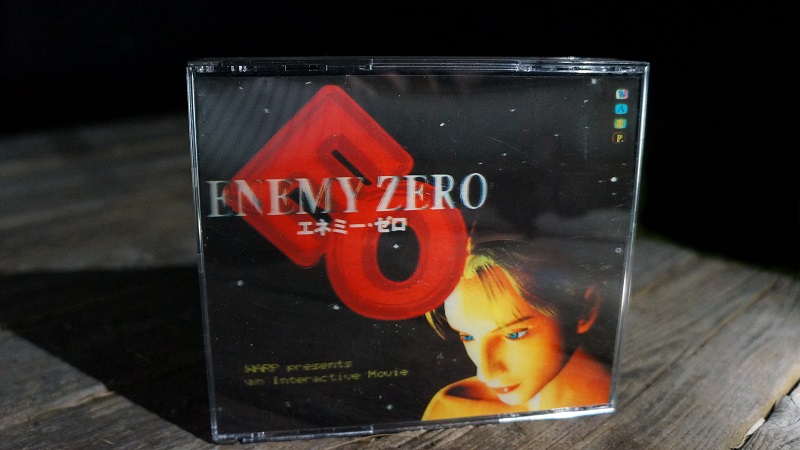
Enemy Zero
Sega Saturn, released December 1996
Just a few years after his breakout hit with D, Kenji Eno moved on to his next game, which is a somewhat indirect sequel to D called Enemy Zero. The game is a mix of FMV adventure game segments (much like D) as well as free-roaming first-person segments with exploration and combat.
The game takes place on a space ship where your character wakes up from cryogenic sleep to an explosion and sounds of destruction all around. As you explore, you find out that an alien enemy has gotten loose and is wreaking havoc, and you need to grab your equipment and track it down. There’s one major problem in tracking down this enemy, however: it is entirely invisible to human sight. This lends a huge amount of originality to the game’s combat system, since you can only use the sound of a pitch-based proximity device to track how close to you and where the enemy is.
On top of this, all the guns in the game have a very short range, a long reload process, and require significant charge-up time before each shot is fired, so you must use the sound tracker as your key as to exactly when and where to shoot before the enemy gets too close and causes instant death. This adds a huge amount of tension to every encounter and makes it so you never really feel safe, and no other horror game has handled their combat encounters in quite the same way.
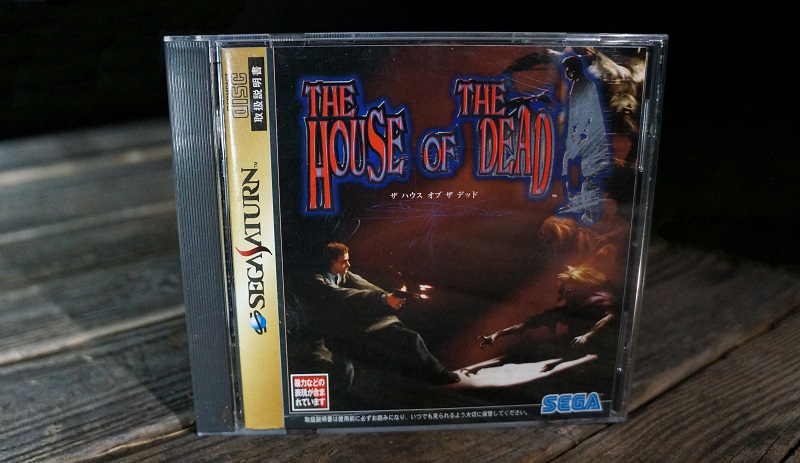
The House of the Dead
Sega Saturn, released March 1998
This home port of Sega’s hit horror light gun arcade game from 1996 was the stuff of legend upon its release, with so many fans (myself included) who loved the arcade version finally being able to have the experience at home. Along with Resident Evil, the House of the Dead arcade game ushered in a new era of interest and appreciation for zombie films that had grown fairly dormant since the late 1980s, so finally getting a home version of the game was a dream come true for many of us.
While the idea of horror-themed shooting galleries has been around for ages in amusement parks or haunted houses, and games like Crypt Killer or Corpse Killer had brought light gun horror to life in 2D, House of the Dead attempted to update that experience for the modern age with the use of early 3D graphics and light gun technology. The game featured more blood, gore, and dismemberment than any other light gun game at the time, and had some of the deepest and creepiest horror themes that the genre had ever seen. The awesome music, complex secrets, multiple branching paths, visceral gore, and fast-paced/tense action set the game apart from all its predecessors.
While the Saturn port has some unfortunate performance issues that can make it tough to play on later stages, it was still a godsend to be able to play it at home without pumping endless quarters into an arcade machine. The HOTD series has continued all the way up till today, with over a dozen games and spin-offs produced in the series over the years.
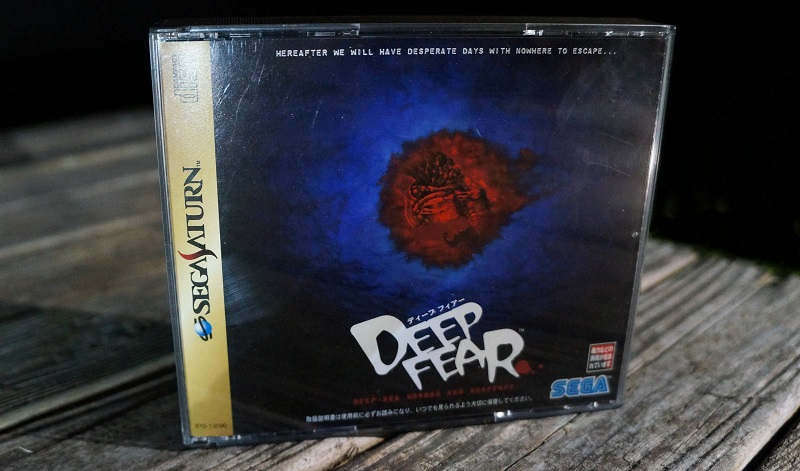
Deep Fear
Sega Saturn, released June 1998
After the Sega Saturn got its own port of the original Resident Evil in 1997, Sega got the idea to dip their feet into the survival horror genre for themselves with 1998’s Deep Fear. Most elements of the game draw heavily from Resident Evil, except it all takes place underwater, with several underwater locations and story beats that follow suit accordingly. It also improved several elements from Resident Evil‘s trademark gameplay, including dedicated buttons for item use without having to open a menu, aiming while moving, and also a need to refill your oxygen levels occasionally to continue breathing underwater.
Deep Fear also features some of the absolute best/worst voice acting in video game history, even giving the original Resident Evil a run for its money. It’s quite an experience, with every character sounding as wooden and Canadian as possible, and some of the Japanese dev team even voicing in-game characters using horribly broken, phonetic English that results in some absolute comedy gold.
While the game has some major pacing issues, it’s still a fun play for anyone looking for a unique piece of horror gaming history. Deep Fear also has the distinct notoriety of being the last officially released Saturn game in the Europe region, signaling the end of an era as Sega pulled the plug and moved on to Dreamcast development, and unfortunately, because of this, the US release was scrapped and never saw the light of day.
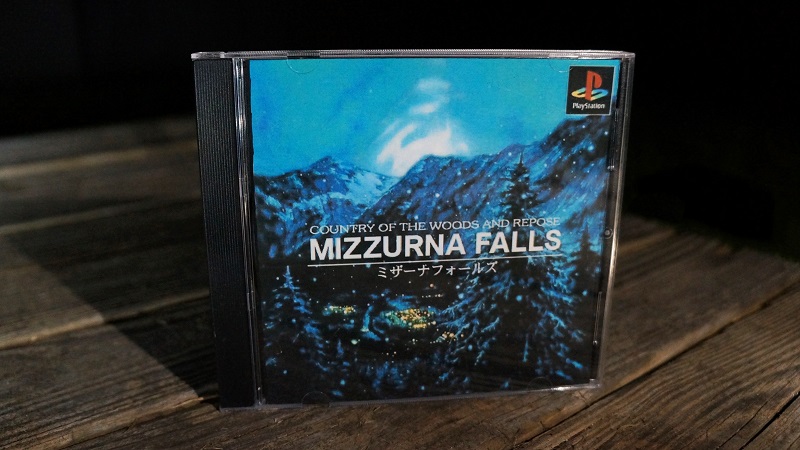
Mizzurna Falls
Sony Playstation, released December 1998
Has anyone here played the Deadly Premonition series? I’d guess the answer to that would be a pretty resounding “yes,” but it’s less likely that many people know about the game that essentially inspired everything that Deadly Premonition would become almost 12 years later. Mizzurna Falls is a unique adventure game from the makers of the Clock Tower series with some dark, horror-ish themes from time to time, and it wrote the blueprint for games like Shenmue and Deadly Premonition to follow some years later.
Human Entertainment’s influence from Twin Peaks in Mizzurna Falls comes through with flying colors, from the visuals, the music, the setting, the story, and just about everything else. Hell, some of the story beats and even character names are almost carbon copies of Twin Peaks, but here, you actually got to be in that world. Instead of being a bystander in the world of television viewing, Mizzurna Falls allowed you to walk around and explore this world and interact with its characters while solving mysteries of disappearing girls and dark secrets lying beneath the ruse of complacent small-town American life.
Much like Deadly Premonition‘s Greenvale, Mizzurna Falls felt like a living, breathing place, with NPCs and various people walking around town on their own individual schedules, businesses and buildings opening and closing at certain times, as well as the active passage of time and dynamic weather elements. These kinds of elements pushed the PlayStation console well beyond what most people thought was possible in terms of creating immersion in a world, and it’s still a bit of a marvel even today to think how this was accomplished.
Unfortunately, the game was never released outside of Japan, though an English translation project is about 90% complete and is available if you can dig far enough into the annals of the internet. It’s worth seeking out for any big fans of Twin Peaks and Deadly Premonition.
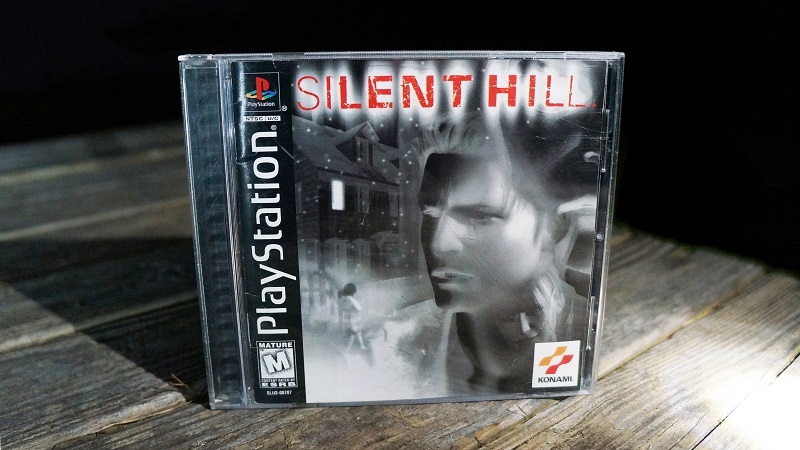
Silent Hill
Sony PlayStation, released February 1999
As the PlayStation console started nearing the end of its life in the late 90s, many people started looking forward to the already-leaked PlayStation 2 console and what it would be capable of. Meanwhile, Konami was getting ready to unleash what would become one of the most revolutionary and terrifying survival horror games of all time on an unsuspecting world.
With the release of Silent Hill, the world of horror gaming would never be the same. The level of immersion, unique scares, atmosphere, realistic dynamic lighting effects, fully 3D environments, unprecedented sound design, and the complex, esoteric storytelling that Silent Hill brought to the table all really made the game stand out upon its release. I was lucky enough to get a copy on the week of release and nothing could have prepared me for how absolutely terrified I would be in the days to follow, where I spent 3 or 4 days doing nothing but being immersed in the town of Silent Hill.
While Resident Evil and a few other games at the time had their own kind of tension and horror, Silent Hill brought its own brand of psychological horror that managed to chill me to my core and even make me feel like I needed to take breaks because of how scary and tense it was. The scenes of the elementary school, the hospital, and most other locations from Silent Hill are forever etched into my memory like a bad nightmare that just won’t go away, and I love it to death.
The series continued on to create some amazing sequels over the years (which will also be covered later in the series,) but the first game still stands the test of time of being one of the most harrowing gaming experiences you can have prior to the end of the year 2000.
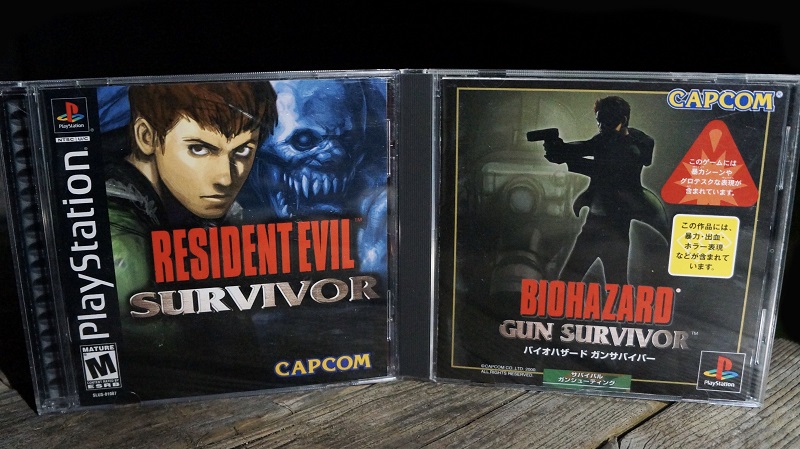
Resident Evil Survivor
Sony PlayStation, released January 2000
As I’m sure many readers will now be gasping at the idea of this game being included as an important or memorable horror game, I’d ask you to take a few moments to reconsider that thought. While Resident Evil Survivor quickly became the most-hated entry in the Resident Evil series to Western fans for many years to come, I’d have to contest that this was due to a number of factors that included bad decisions when it came to the marketing and release of the game more than the game quality itself, at least to some degree.
First of all, I have to say that if you’ve only played the US version of the game, you haven’t really played the game. Capcom made a big mistake when releasing Survivor in the US by choosing to completely remove the GunCon light gun support in light of the recent incident of real-world violence in Columbine, which unfortunately makes the game a mere shadow of its former self. While Japan and Europe both got to experience it as it was meant to be, the US got a bastardized version that stripped the game of its uniqueness and made the controls clunky and boring.
Besides the fact that Survivor lets you explore the world of early 3D Resident Evil in first-person- which is already a cool enough thing on its own- the light gun gameplay made it unique. This was the first light gun game that also let you fully control your movements instead of being on a set “rail” or path. This allowed for fun exploration and a unique control method that was really never done the same way before or after, except in the other entries in the Gun Survivor series (Survivor 2 CODE Veronica, Dead Aim, and Dino Stalker.)
If you can get your hands on a Japanese or European PlayStation or have another way of playing import games on your console (and a CRT television,) I’d still argue that Survivor is worth a revisit, hopefully with an open mind and a light gun in your hand.
_____________________________________________________________
While there were plenty of other horror games that were released in this time period, a good amount of them were fairly lackluster imitations or sequels of the games mentioned here, as well as some others that may have had good ideas, but ultimately failed to stand out among the large flood of horror games that were produced in the wake of Resident Evil‘s success.
A few honorable mentions, sometimes if only for their silly campiness, would be games like Echo Night 1&2, Alone in the Dark 2, Resident Evil 2, Dino Crisis, Crypt Killer, and Castlevania: Symphony of the Night.
As always, hopefully, you’ve enjoyed this journey back in time and maybe even learned something or found a new game to check out along the way.
Stay tuned for the next installments of Generations of Horror as we continue to move forward through the generations to see how horror games progressed through the early to mid-2000s, and please share any feedback or discussion you have in the comments!
Here are the full-size photos from the shoot:

